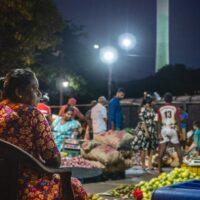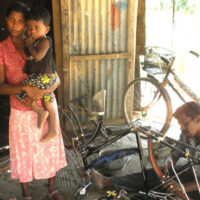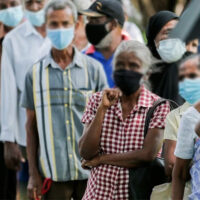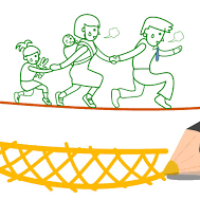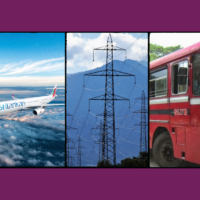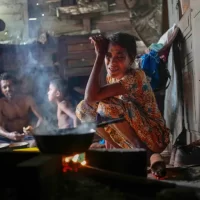Navigating the Nexus: Social Cohesion and Poverty in Sri Lanka : Part 02
The Nexus In The Real World, an Analysis of the Up-Country Tamils
CHAPTER IV: LANGUAGE 18.(1) The Official Language of Sri Lanka shall be Sinhala. (2) Tamil shall also be an official language. (The Constitution of the Democratic Socialist Republic of Sri Lanka)
This excerpt from the constitution is an ostensible illustration of the preferential treatment afforded to the Sinhalese communities of Sri Lanka, hinting at the structural constraints placed onto those outside of the norm. For Professor Kotagama, speaking at: The Centre of Poverty Analysis’s (CEPA) 6th edition of the Intergenerational Dialogue Series (IDS V1), it is the significant hurdle that must be tackled if Sri Lanka hopes to achieve social cohesion.
The implication of such a majoritarian, nationalist agenda, on a document as universal and important as the constitution is great. That being said, in a report from the Centre of Policy Alternatives, they found in their survey: The Scope and the Content of the Sri Lankan Constitution: Perspectives of Opinion Leaders, that it was Up-Country Tamils who were not only most in favour of retaining the Constitution in its current form, but were satisfied the way in which democracy functioned.
Up-Country Tamils are the most economically deprived group in Sri Lanka. The work of LIRNEasia ‘Social Safety Nets and the State of Poverty in Sri Lanka’ highlighting the growth of poverty to 44% amongst this population, as opposed to the countries 31%. Not only is the group economically disadvantaged, politically they have been traditionally removed from the State’s apparatus and socially both the Sinhalese and the Sri Lankan Tamil communities have distanced themselves from them. Episodes of communal violence directed against this community occurred during the anti-Tamil pogroms of 1977 and 1983, however, as a collective, Up-Country Tamils have not engaged in conflict. Professor Pinnawala, speaking at IDS VI, argued for an understanding of social cohesion independent of conflict (or absence of), hence, in our navigation of the nexus between social cohesion and poverty this is a pertinent case study. By observing the divisions seen across all intersections within the Up-Country Tamil community: gendered, economic and ethno-religious, we can investigate social cohesion and its impact, without the conflation with conflict. From here we can begin to understand why this group does not see constitutional change as the remedy to their problems.
Framework
The Hill Country of Tamils Report (HCTR) outlined three drivers of structural disadvantage: removal from the state’s apparatus , dependency on plantation companies and the brokerage of trade unions, all operating within a mutually reinforcing relationship. By building upon the work of the HCTR outlining the 3 drivers of structural disadvantage, we can begin to investigate why there are no networks, norms or responsibilities on which to build social cohesion, which has left the Up-Country Tamils the most disadvantaged group in Sri Lanka.
Economic Discrimination
The small number of elites within this community, who controlled the Trade Unions and Plantation companies, saw the workers as a means to an end. They were happy to maintain the status quo, because they had political and economic control, which only increased after the emergence of the Tamil separatist movements in the 1980’s.
The Malaiyaham 200 conference held in May 2023 was heavily criticised in an article on the World Socialist Web Site, (Gunadasa, Jayasekera 2023), the elites call for power-sharing and greater recognition of leaders, being torn down, as an attempt to position themselves into power at the expense of plantation workers. This has been the story for Up-Country Tamil workers in post-colonial Sri Lanka, where, for example basic facilities like hospitals and schools were provided, but they were tied to the plantation, thus inhibiting social mobility.
This exacerbated the problem, for if the group wanted to seek employment elsewhere, the lack of educational skills, not provided by the schools, and the inability to afford travel arrangements or the time to search for other opportunities made it hard for them to seek employment outside of their traditional estate sector. Workers became increasingly dependent on their superiors, for housing, sanitation, education and other facilities that were afforded to the rest of Sri Lanka by the government. Even in contemporary Sri Lanka, ‘below-poverty wages and dire social conditions facing estate workers and their families are a direct result of the trade unions’ collaboration with the plantation companies and successive governments.’ (Thevarajah, 2023).
It is no secret that social cohesion between ethnic groups has oft been missing in Sri Lanka, but for the Up-Country Tamils it is abundantly evident, within the group, that elites were able to make substantial gains and reinforce themselves, at the expense of everyone else.
Gendered Discrimination
By keeping the workforce subjugated, traditional gendered divisions became even more entrenched, whilst other parts of the country made strides in a progressive direction. On the tea plantations, women not only are the vast majority of workers, being the largest unionised sector in the country, but are politically involved with 96% of women claiming to be members of a political party (HCTR), demonstrating their desire to actively improve their circumstances. Nevertheless in positions of authority, whether as authority figures in companies, unions or political parties, they are wholly underrepresented.
Traditional cultural norms within the Up-Country Tamil society discourage women’s participation in public life (HCTR), as they are instead expected to remain on the Estate functioning in the duel role of plantation work and childcare. Within the report, specific women spoke of how societal pressures and fear of familial repercussions prevented them from speaking out and engaging with the politics governing their lives. Thus, even with increased education within the region, as the government belatedly invested within their communities, it is difficult for women to infiltrate the positions of power, so that they may voice their grievances in order to initiate positive change.
For this reason, is it far more difficult for networks of trust to be constructed between women both outside and within the Estate. Women are far less able to seek employment outside of the tea plantations or negotiate for better conditions within them. They are more economically constrained than their husbands, having to work essentially double time as primary caregivers and workers. Traditional societal structures only further this by greatly inhibiting their agency, as household decisions were that of the husband. Thus, while poverty is investigated via household income, is it undoubtable that on average, women of the Up-Country Tamil community are in a worse economic situation, a factor which must be addressed in poverty research. The greater social cohesion between the men, as heads of the households and often as the sole speakers of Sinhala, grants them more opportunities to improve their circumstances; they are simply better able to maximise their agency through male dominated networks.
Ethnic Discrimination
Although the LTTE had once called for a work stoppage in solidarity with the Up-Country Tamils protests in May 1990, there was no cohesion between these two groups. The political forces of the Sri Lankan Tamil community had done little to support their Up-Country counterparts until they realised that their support would be useful in their separatist cause. The fact that they had been bonded labourers, brought in during the British era, meant that the majority of the Up-Country group were of a lower-caste (Rislam, 2014) and were discriminated upon this basis within the more middle or upper caste communities in the North and East. Thus discrimination went beyond the major political forces, it was far more traditional and individualistic. Tomoya Obokata, the UN Special Rapporteur, was explicitly concerned with contemporary forms of slavery, present especially amongst Up-Country Tamils, where ‘Malayaha (Up-Country) Tamils are disproportionally affected by marginalization [and] discrimination’ and that when people moved North to seek better environments, within the Tamil community, they were subject to further discrimination (Rajasegar, 2021).
Of course, this did little to differentiate Up-Country Tamils and Sri Lankan Tamils in the eyes of the general Sinhalese population. The violent pogroms in 1981,1983 and as late as 2000, did not discriminate between the Tamil groups and ‘The Malaiyaha Tamils in Sri Lanka faced communal violence’ (Srinivasan, 2023) from the Sinhalese community, despite the leading Up-Country Tamil party, the Ceylon Workers Congress, speaking directly against the actions of separatists in the North. Today, the scars remain within the region as ethnic differences continue to contribute to discrimination against them. The HCTR highlighting that Up-Country Tamils ‘have problems finding jobs outside [and that] there is discrimination’.
The Samurdhi welfare programme provides a contemporary example of how government institutions are indirectly and directly discriminating against Up-Country Tamils, because of ethno-linguistic differences. LIRNEasia’s SSNSP revealed that 31% of the poorest households were not receiving support from the welfare programme. This problem is especially persistent amongst the older generation, as a lack of education meant that they were less likely to understand that they were protected against discrimination and that they had right to a Sinhala language interpreter (Ramesh, 2020). This feeding back to the gendered problems we mentioned prior. The SSNSP provided a quote from an Up-Country Tamil, detailing how they were denied access to welfare because they were not members of the ruling party. Such blatant discrimination should not be present according to the constitution itself, where Tamil is ‘also an official language’, but a lack of education and social discrimination created it regardless.
Conclusion
The complete lack of social cohesion across social, economic and gendered divisions worked both to exacerbate and reinforce poverty. The slow improvement, despite increased government investment and legal changes, is illustrative of how important social cohesion is.
So what does this all mean? The constitution is not a major factor in creating and reinforcing poverty for Up-Country Tamils. On a far more individual level we see gendered division denying 50% of the community enough agency to improve their conditions. Within the community, elites are hesitant to help their own, happy to retain below-adequate structures, in order to protect their entrenched power. Although strong nationalist sentiment fostered in the Constitution promotes ethno-religious discrimination, it cannot solely be blamed for exacerbation of poverty.
To return to The Scope and the Content of the Sri Lankan Constitution: Perspectives of Opinion Leaders it’s easier to understand why Up-Country Tamils were more in favour of maintaining the constitution than others. In their situation there are a multitude of factors that are far more pertinent than constitutional reform. Recent government investment may eventually produce positive outcomes, but with poverty in these communities as high as ever, deeper causes must be considered. The Samurdhi program highlights, that despite constitutional law, language is not there for all and this only reinforces gender discrimination and elite profiteering.
Social cohesion, therefore, is imperative in investigating poverty within the Up-Country Tamil group. The lack of networks for women to utilise, the absence of trust between Sri Lankan Tamils and Up-Country Tamils and economic elites erecting barriers to progress must all be addressed simultaneously if poverty is to be alleviated within these communities. Awareness on an individual level is essential, so that disadvantaged people are aware of their rights and can protest decisions for themselves without fear of repercussions and also to prevent indirect and structural discrimination that exists, because of past grievances.
The Constitution should be doing more to protect these communities, but specific language rights, demonstrate that it is often the lack of institutional changes that are the problem, not the constitution itself. Social cohesion must be used in this discussion of poverty, as they are intrinsically connected and current measures are not doing enough to solve the problem. By involving social cohesion in the discussion on Up-Country Tamils, a group that has been absent from the traditional conflict zones of Sri Lanka, we can demonstrate that the nexus of the two phenomena goes beyond the traditional, more simplistic, discussion of the relationship between conflict and poverty.
by Louis Samarasinghe
(Mail: loumaxsam@gmail.com)
